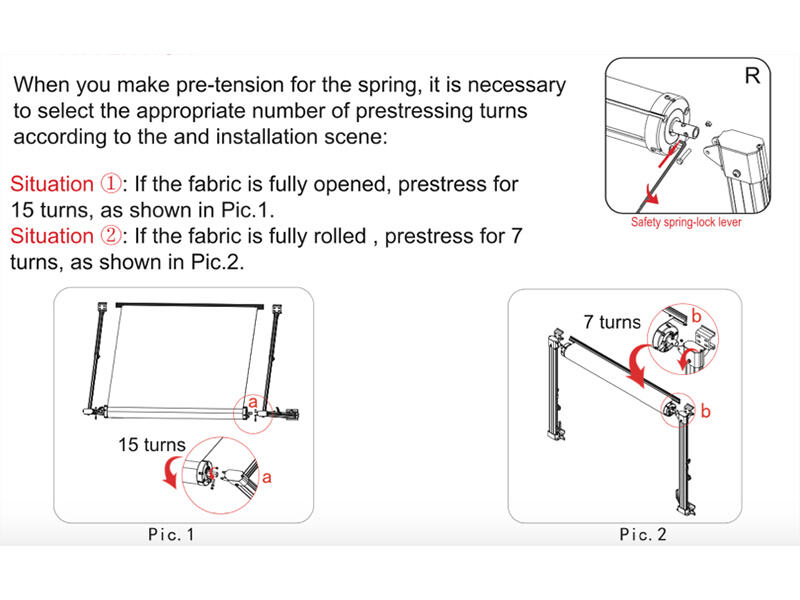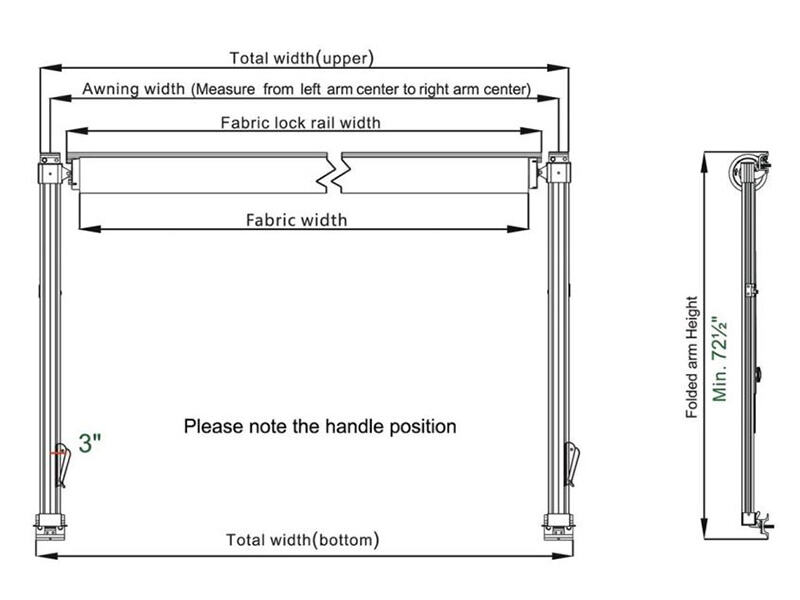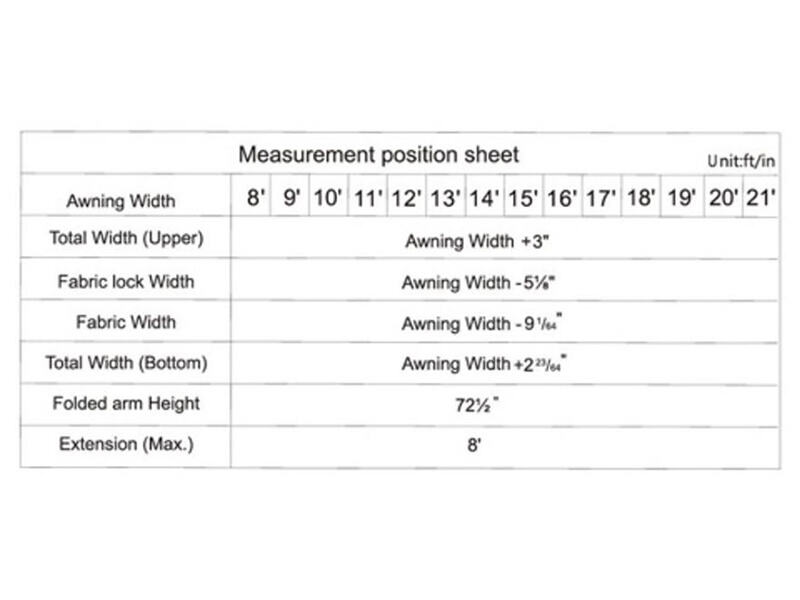V današnji priljubljeni kulturi življenja v kampih in z RV vozili Ponavljalka za RV niso več zgolj izbirni dodatki. Vendar pa tudi najbolj vzdržljivi Ponavljalka za RV lahko zaradi povečane pogostosti uporabe ali raznolikosti okolja uporabe (vetra, peska, dežja, sončne svetlobe, visokih temperatur) imajo manjše težave. Takrat vam obvladavanje osnovnega znanja o odpravljanju težav ne omogoča le mirnega reagiranja na nujne primere, temveč tudi podaljša življenjsko dobo opreme in zmanjša stroške nadaljnjega vzdrževanja.
一, Zakaj je odpravljanje težav pomembno?
Pri nakupovanju ročne raztezne strehe za karavane veliko ljudi pozornost nameni funkcionalnosti in ceni. Šele po uporabi ugotovijo, da je trajnost Ročnih razteznih streh za RV vozila tesno povezana z vsakodnevno uporabo in odpravljanjem težav. Odpravljanje težav ni zgolj »popravilo«, temveč tudi »preprečevanje«.
1. Poskrbite, da vas zunanji izpit ne bo prekinjen
Predstavljajte si, da ko se pripravljate na zunanji barbeku v gozdnem kampu, se ročna nadstrešnica prikolice ne da razširiti; ali pa se nenadno zatakne in jo ne morete zategniti v deževnem dnevu. Ni samo nevšečno, temveč lahko tudi vpliva na nadaljnje načrte. Obvladovanje znanja o odpravljanju težav zmanjša možnost prekinitev vaših načrtov.
2. Preprečite, da bi majavosti postale veliki problemi
Večina Krovna plenka za RV problemi se začnejo kot manjši problemi, kot je rahlo zatikanje, ohlapni roki ali ročica, ki se 'obrnete nekoliko težje. Vendar če jih ignorirate, se lahko sčasoma pripeljejo do resnejših posledic, kot so trgane tkanine, lom cevi in lom vpetin, kar povzroči visoke stroške popravila ali celo zamenjavo celotnega kompletov.
3. Zmanjšajte stroške servisa in vzdrževanja
Obvladovanje osnovnih spretnosti diagnostike in popravila, uporabniki lahko rešijo številne težave sami, kot so maščenje, pritrditev, prilagajanje, čiščenje itd., kar ne samo prihrani čas, temveč zmanjša tudi nepotrebne stroške servisne podpore.
drugič, Pogosti problemi in rešitve za Awnlux RV ročne izvlečne markize
Čeprav se lahko vsaka znamka ali model RV ročna izvlečna markiza nekoliko razlikuje, je njihova osnovna struktura in načelo delovanja približno enako, skupne težave pa so tudi univerzalne. V nadaljevanju je za primer vzeta Awnlux in so navedene najpogostejše vrste okvar, s katerimi se uporabniki srečujejo ob uporabi Ročnih razteznih streh za RV vozila ter ustrezne rešitve in predlogi za odpravljanje težav:
Odpravljanje težav ob nameščanju Awnlux kamperske ročne izvlečne markize :
- Merilna in namestitvena metoda
Običajno se velikost RV ročna izvlečna markiza izračuna od sredine levega rokava do sredine desnega rokava. Vendar pa med dejansko namestitvijo izračunamo namestitveno dolžino od roba levega rokava do roba desnega rokava, kot je prikazano na sliki – skupna širina nadstreška (zgoraj).
Pri merjenju namestitvene velikosti Krovna plenka za RV bodite pozorni, da se rokav mora med nameščanjem izogibati oviram, kot so okna, vrata, luči in vhodi v shrambo, ter zagotoviti, da je valj nadstreška na določeni razdalji od vrat, in zagotoviti, da ima nadstrešek na kampovalnem vozilu določen nagibni kot do vrat, ko je RV ročna izvlečna markiza odprt, in da tkanina ne bo drla ob vrata.
Oglejte si diagram v rokovniku za izdelek, diagram za izračun velikosti nadstreška ter tudi namestitveni video, da označite vse namestitvene lokacije.
Namestitveni video:
- Kako namestiti torzijsko silo v vzmet
Za večino blagovnih znamk RV ročna izvlečna markiza , vzmeti z vijačnim navorom so prednapete pred odpremo. Ko jo prejmete, lahko preprosto namestite roke in jih povežete s valjasto cevjo, da začnete uporabljati.
Če pa vzmet za nadstrešek izgubi napetost ali odpove in jo je treba zamenjati, morate odstraniti staro vzmet in prednapeti novo vzmet z navorom pred namestitvijo. Tukaj je postopek za prednapenjanje in namestitev vzmeti:
- Najprej odstranite staro vzmet in vstavite novo vzmet v valjasto cev na istem položaju
- Prednapnite navor na obeh levi in desni vzmeti glede na vaš priljubljeni način
Stanju 1. Če želite uporabiti navor s odpiranjem tkanine, uporabite 15 polnih obratov navora na levi in desni vzmeti. Ko dosegnete napetost, zaklenite vzmet z varnostnim pinom, nato povežite Krovna plenka za RV roke z valjasto cevjo.
S situacija 2 . Če želite platno zviti in uporabiti torzijo s strehe, naredite 7 polnih zasukov torzije na obeh vzmeteh. Zavarujte vzmet z kolom in povežite roke s valjasto cevjo.
Opomba: Različne blagovne znamke Ročnih razteznih streh za RV vozila imajo različne zahteve glede različnega števila zasukov torzije. Za specifično in točno število zasukov se obrnete na uporabniški priročnik.
Če uporabniškega priročnika ni, lahko uporabite navor glede na naša priporočila za zgoraj navedeno število zasukov. Za specifične metode zamenjave se obrnete na Awnlux Video na YouTube-u:

RV ročna izvlečna nadstrešek ne more zapreti samodejno ali popolnoma po razširitvi.
Analiza vzroka : Nezadostna elastičnost vzmeti
Rešitev : Ponovno nanesite navor na vzmet
Postopki uporabe
Korak 1 :Popolnoma raztegnite nadstrešek v najvišji položaj. Vstavite zaklepni pin in nato odstranite podporni roki.
Korak 2 :Odstranite pin, da popolnoma sprostite napetost vzmeti.
Korak 3 :Ponovno nanesite 15 polnih obratov navora na obe vzmeti, levo in desno, nato ponovno vstavite zaklepni pin.
Korak 4 :Ponovno priključite valjasto cev na roke, nato odstranite pin in ponovno preverite, ali je elastična sila obnovljena. Če je napetost še vedno šibka, je vzmet morda obrabljena in jo je treba zamenjati. Oglejte si video posnetek:
Ročni nadstrešek za karavan roki se ne moreta složiti pravilno
Analiza vzroka : tkanina ni poravnana ali valjasta cev in roki nista nameščeni pravokotno druga na drugo, kar ima za posledico nepravokoten oblikovni element.
Rešitev :
Korak 1: Uporabite vodno tehtnico ali ravnilo za merjenje vodoravnih in navpičnih kotov med valjasto cevjo in rokama. Prepričajte se, da je valjasta cev nameščena v sredini dveh ročnih nosilcev in da je tkanina tudi poravnana na valjasti cevi.
Korak 2: Če ugotovite, da ni dovolj ravno in centrirano, znova prilagodite namestitev.
tri, Nasveti za uporabo Ročnih razteznih streh za RV vozila (preprečevanje je boljše kot popravilo)
Čeprav je pomembno poznati odpravljanje težav, so dobre navade uporabe in redno vzdrževanje temeljni način za zmanjšanje pojavljanja težav. Tukaj je nekaj preprostih, vendar zelo praktičnih nasvetov za upravljanje, ki smo jih povzeli:
1. Opazujte vreme pred uporabo
Čeprav je RV ročna izvlečna markiza lahko zadrži veter in dež, vendar ni naprava za močan veter. Če je veter nad 4. stopnjo ali pa je vreme nestabilno, priporočamo, da ne uporabljate terasne strešnice začasno ali pa zagotovite, da je dodatno pritrjena z vetrovnimi jermeni, da preprečite nesreče.
2. Pred zlaganjem ohranite suho
Tkanina je večinoma prevlečen material. Če jo zvijete, ko je mokra, se lahko zlahka pojavijo plesen, lepljivost in celo sprememba barve. Prepričajte se, da jo pred zlaganjem posušite na soncu in očistite umazanijo ali pa vsaj odstranite glavno vlago, če razmere omogočajo.
3. Sledite pravilni operativni zaporednosti
Priporočljivo je, da pred prvo namestitvijo ali uporabo preberete navodila ali si ogledate video z namestitvijo ter sledite korakom za odpiranje in zapiranje, da preprečite napačno uporabo, ki lahko povzroči zaklinjanje delov ali poškodbe tkanine.
4. Redne pregledovanje in čiščenje
Priporočljivo je, da vsakih 1–3 mesece izvedete celovit pregled, da preverjate, ali so vijaki ohlapni, ali je tkanina poškodovana in ali je pri roki kakšen znak tresenja. Po potrebi izvedite preprosto vzdrževanje, kot je brisanje površine tkanine, pršenje z mazivom itd.
Zaključek: Ko naletite na težavo, se ne panikejte. Sledite metodam, ki jih ponujamo, in preverjajte posamezno. V večini primerov lahko hitro ugotovite vzrok in težavo rešite sami. Če imate bolj kompleksna tehnična vprašanja, nas lahko kontaktirate prek pooblastila za pooblastilo Awnlux. Vedno smo pripravljeni ponuditi osebno podporo vsakemu stranki.

 EN
EN
 AR
AR HR
HR CS
CS NL
NL FI
FI FR
FR DE
DE EL
EL HI
HI IT
IT JA
JA KO
KO NO
NO PL
PL PT
PT RO
RO RU
RU ES
ES SV
SV TL
TL ID
ID SR
SR SL
SL UK
UK VI
VI SQ
SQ HU
HU MT
MT TH
TH TR
TR MS
MS AZ
AZ KA
KA LO
LO MN
MN MY
MY KK
KK KY
KY



